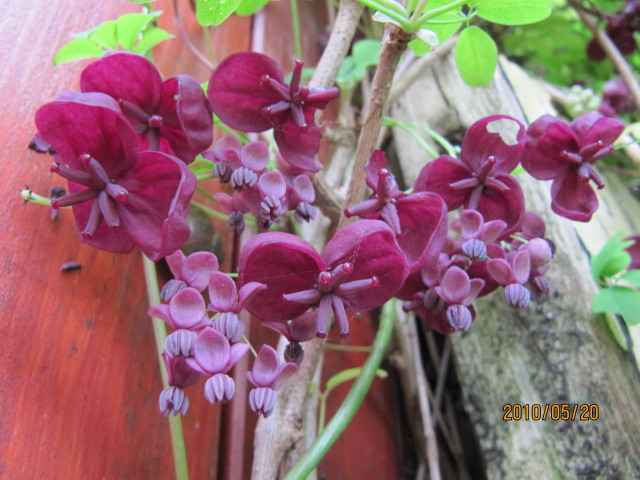Silver Bells is a great addition to your home garden. It produces sweetly scented flowers, large long leaves, and edible fruit pods. This vine can grow up to 20’ tall and 10’ wide. This rapidly growing vine is a site to see. It grows so fast, that it is considered an invasive species in some areas of the world. We’ll go over proper care and treatment of Silver Bells so it doesn’t get out of control.
Native to China, Korea, and Japan, Akebia quinata is a deciduous plant, but can keep its’ leaves like an evergreen during the winter if conditions are not too harsh. This plant grows well in zones 4-8 and can survive -10⁰F temperatures. Silver Bells needs a trellis or other supports structure to grow on.
To keep Silver Bells from getting too large, simply prune it back once or twice a year to keep it the size you want it. When the flowers are developing in the early spring, they are often hidden by the large palmate leaves. This would be an ideal time to prune your plant so that you get more enjoyment out of the delicate and potent flowers.
Silver Bells does the best in well drained loamy soil. Water deeply when the soil has completely dried out. This plant can survive a light drought. The main mistake people make when trying to grow Akevia quinata is over-watering it. The other is not giving this tall plant enough room in their garden.
Place your plant in an area with full to partial sun and watch it explode. This is a great plant for apartment gardeners to train over a window or balcony. Have you tried growing Silver Bells?
Photos: Leonora Enking, Kerry Woods
Jake Frazier is an outdoor enthusiast and the owner of Residential Ecology, a sustainable ecological resource management company. He uses existing natural systems to improve the quality of life for both humans and the Earth. Jake is interested in permaculture, living systems and exploring. Connect with him on LinkedIn.




Beautiful flowers… This is the first time i came to know this type of plant… I never see this before… but looking amazing …. Thanks for sharing 🙂
LikeLike
Thanks! We picked one out on one of our grand adventures and love the added energy it brings to the room!
LikeLiked by 1 person
Yup they look wonderful 🙂
LikeLike